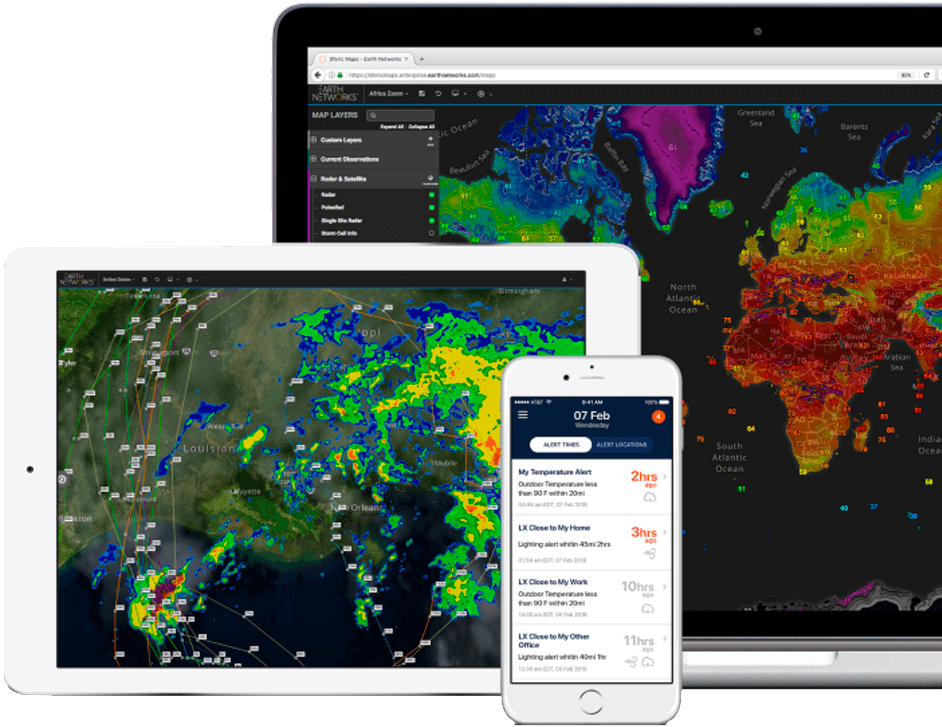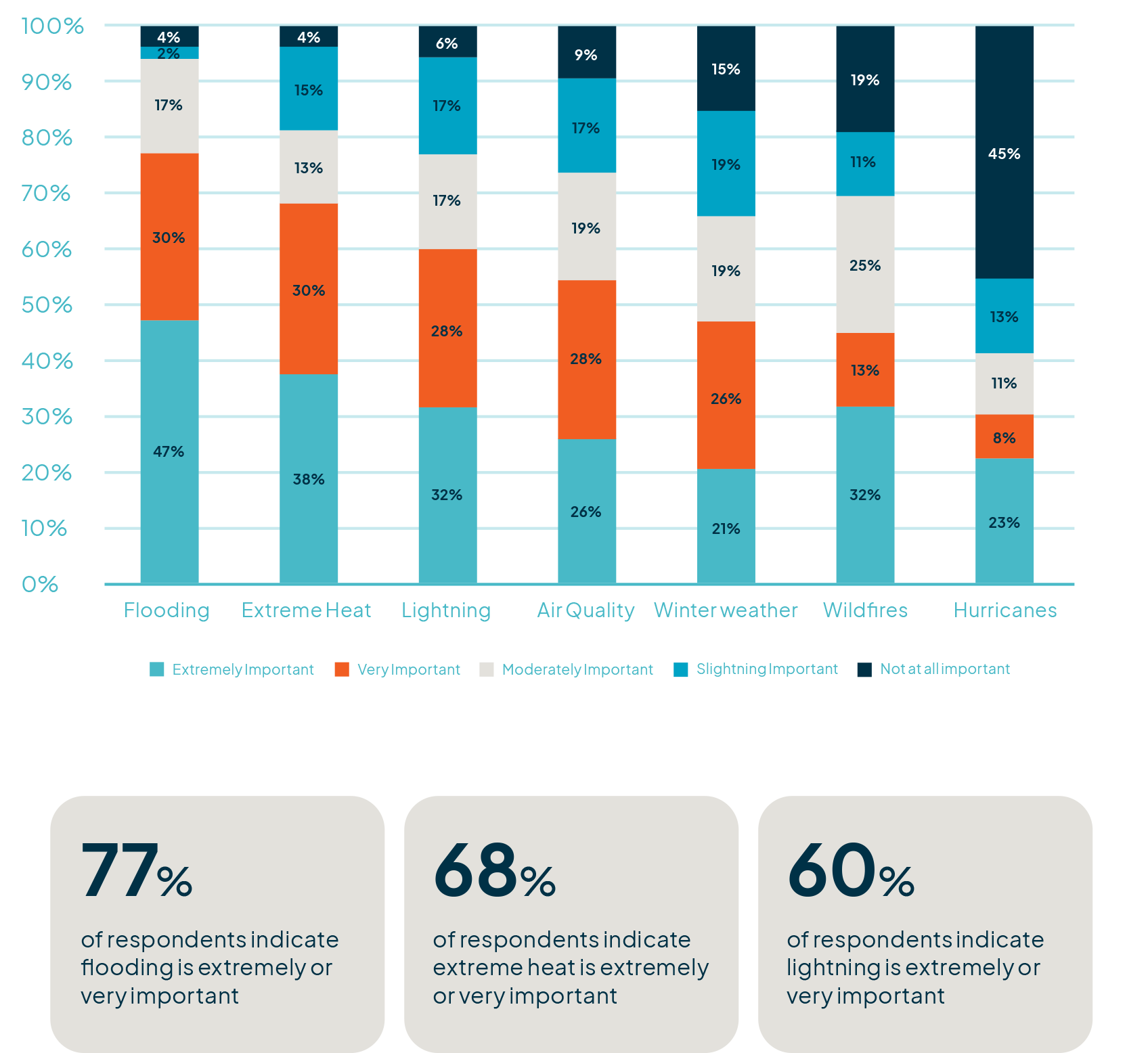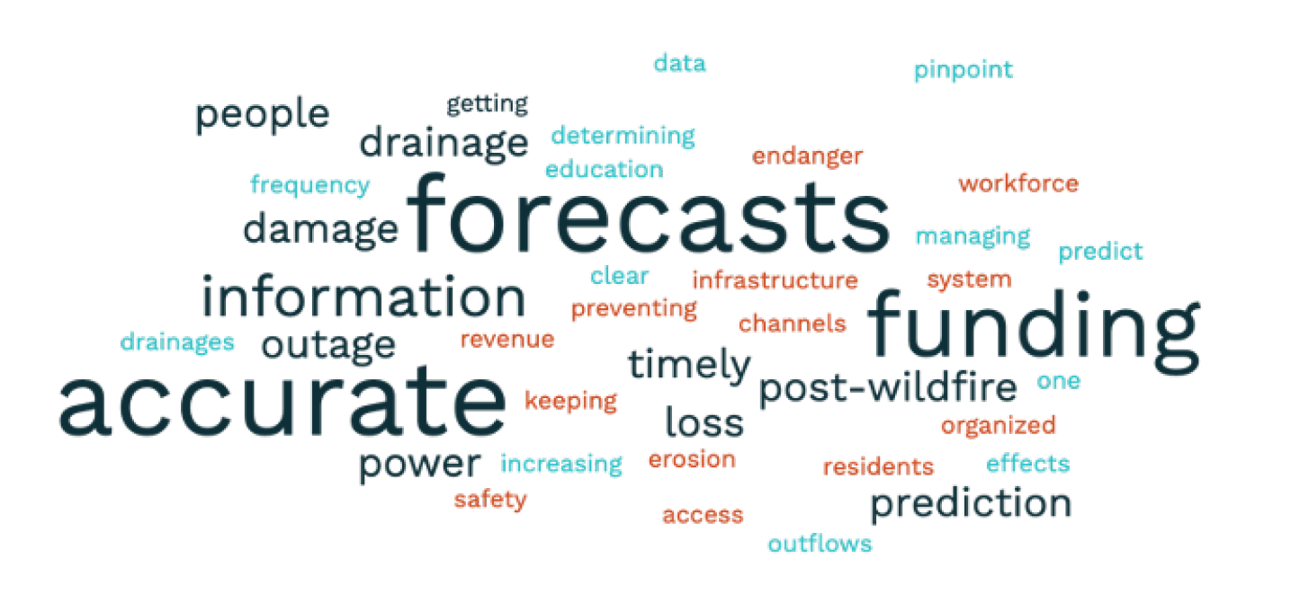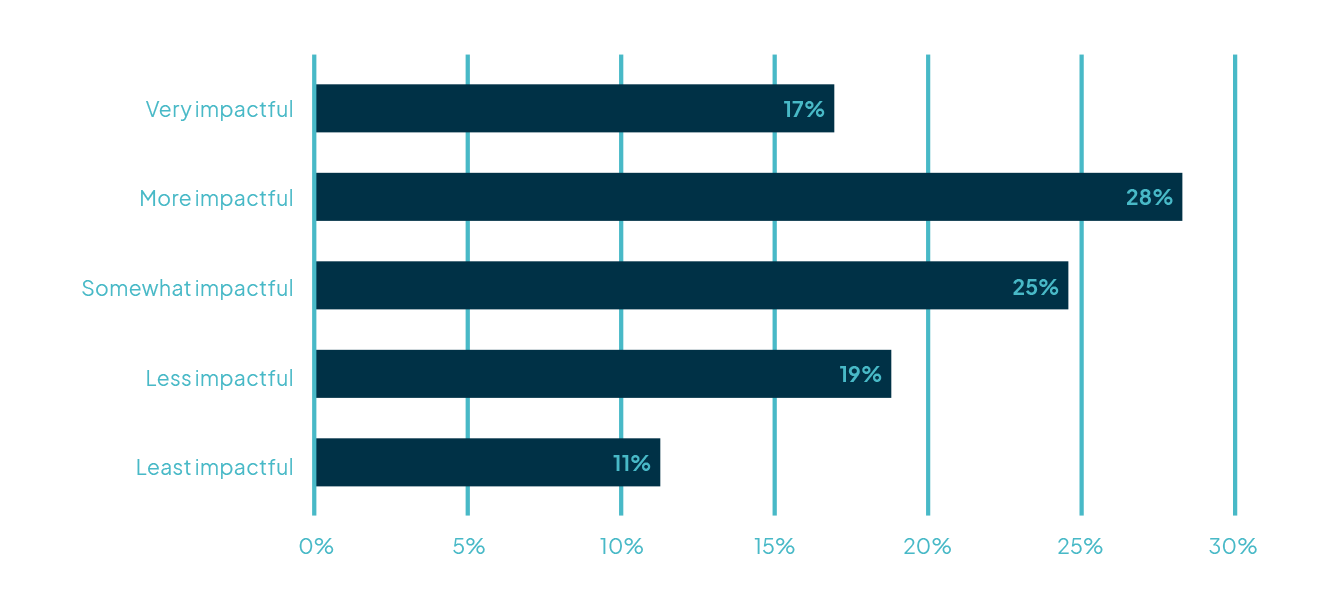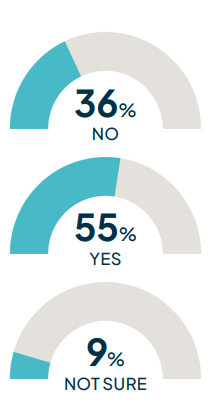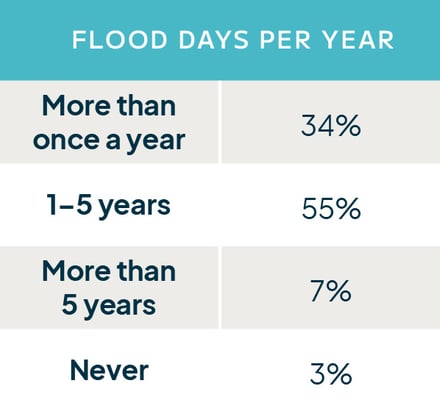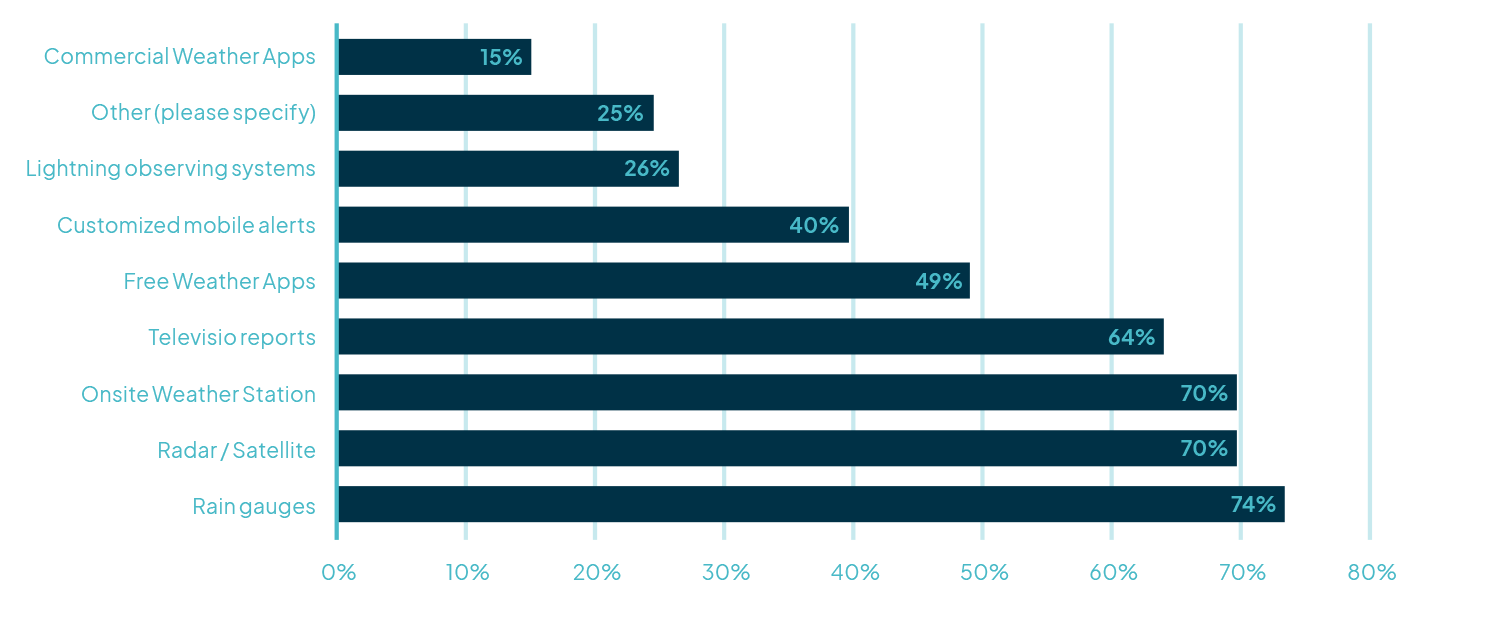2022 AEM REPORT
State of Flood Risk Management Report
.png?width=500&name=MicrosoftTeams-image%20(19).png)
For many communities and organizations, flood risks continue to rise. AEM’s 2022 State of Flood Risk Management Report gives you the latest thinking from the professionals who are responsible for managing these risks.
The report draws on survey responses from professionals across the globe who work for a wide range of organizations spanning both the public and private sectors.
Download the Report.
The 2022 AEM Flood Safety Survey collected responses from professionals across the globe in state and local government, federal government, and private enterprise. Almost half the respondents identified themselves as state and local government employees while the rest identified themselves as federal government and private enterprise employees.
We analyzed the results from this survey and compiled actionable insights into this State of Flood Risk Management Report. In the report, you’ll learn how flooding impacts your peers, their biggest flood risk management challenges, and the solutions they use to mitigate flood risk and improve flood decision-making.
Participants
53 state and local government, federal government, and private enterprise professionals responded to our survey. Although no single group represented a majority of the responses, State and Local government collectively made up 44%. Some of the other respondents included colleges, golf clubs, and farms.
1. WHICH OF THE FOLLOWING BEST DESCRIBES YOUR ORGANIZATION?
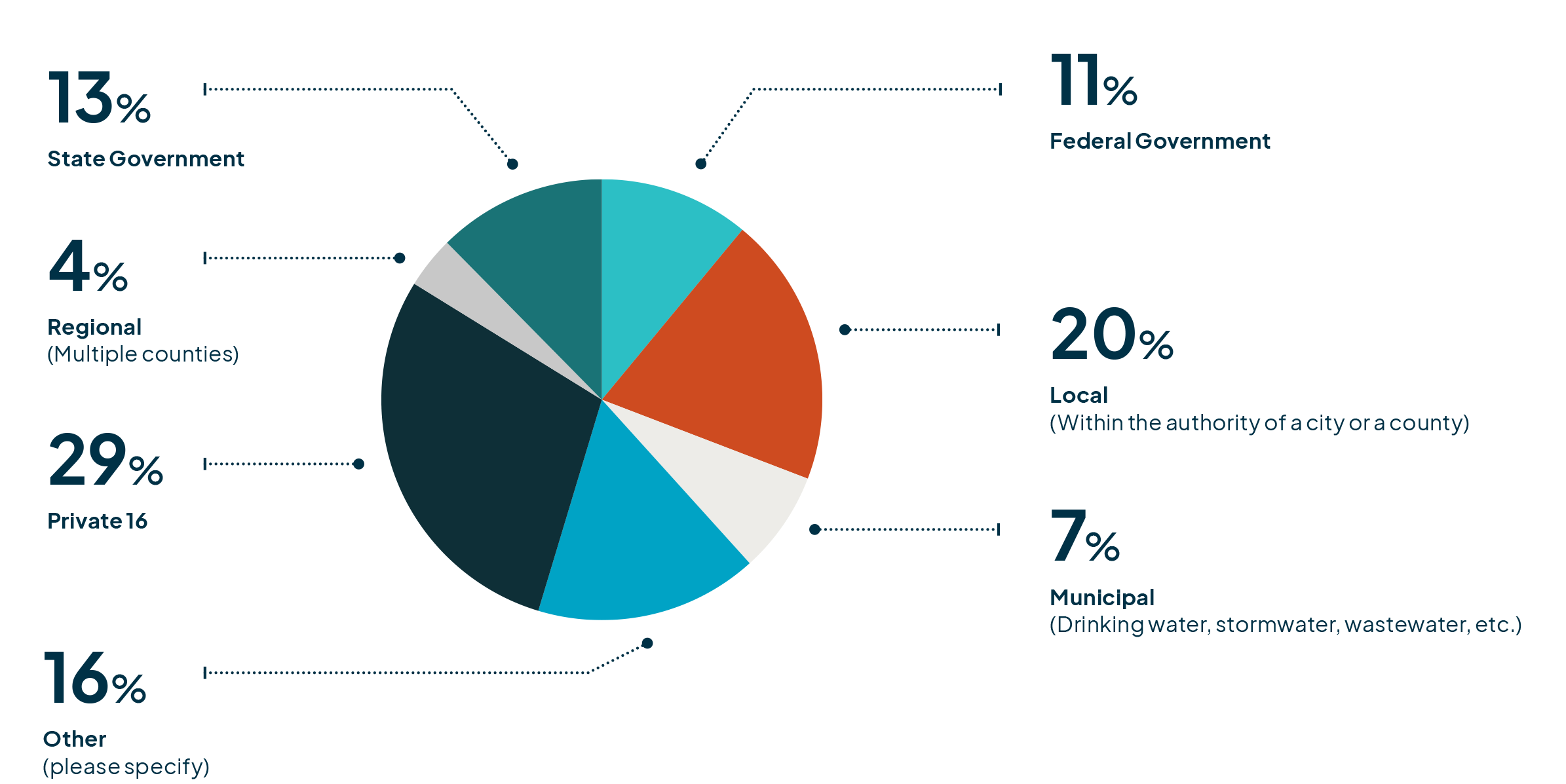
Responses came in from many regions around the globe, with the majority of responses coming from North America (United States 51%; Canada 11%).
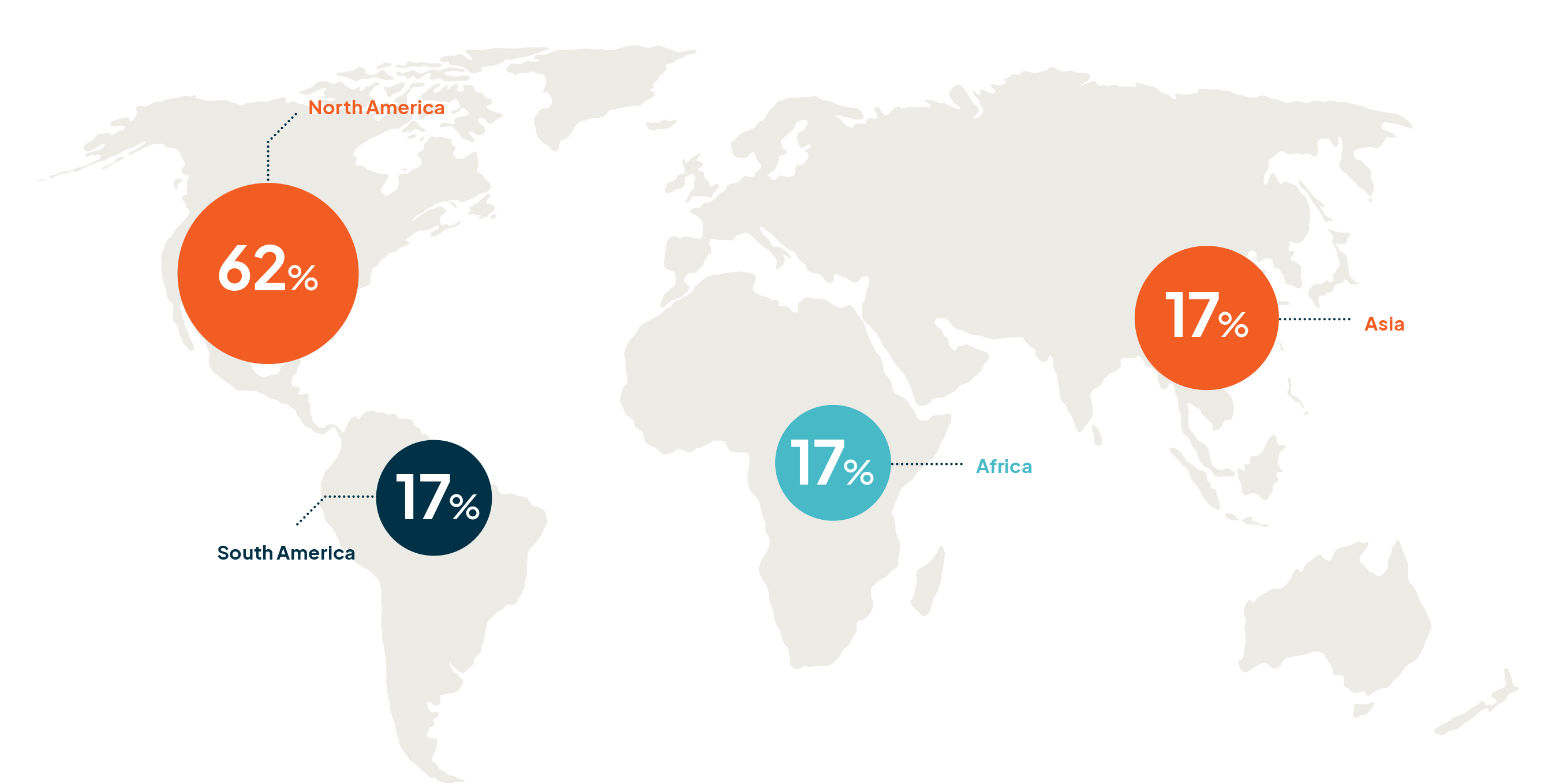
Top weather risks
It’s no surprise that flooding ranked as the top weather-related risk. Especially since heavy rainfall and storm surges impact millions of people and cause billions of dollars of damage to property, infrastructure, and communities every year.
It’s also no surprise that the second and third top weather risks right behind flooding are extreme heat and lightning. In 2022, scorching temperatures, lengthy heatwaves, and fatal lightning strikes have continued to make headlines across the northern hemisphere. And each of these factors can have an impact on flood risk. As temperatures rise, warmer air holds more moisture and storm clouds release more and heavier rainfall when they eventually break. Lightning signals the onset of dangerous thunderstorms, which contain large volumes of rain over a short period of time.
Although winter weather, wildfires, and hurricanes remain dangerous threats, it makes sense that our respondents rank them lower in importance since they tend to impact specific regions around the globe.
2. HOW IMPORTANT ARE EACH OF THESE WEATHER-RELATED RISKS TO YOUR ORGANIZATION?
-1.png)
Read the 2022 State of Flood Risk Management Report.
Recent and future impact
Impacts of floods expected to rise in 2022-2023
Most respondents (60%) indicated floods impacted their organization less than 10 days in 2021-2022. Of those that indicated they experienced more than 10 flood days over that same period, more than half of the responses were from government organizations.
3. HOW MANY DAYS DID SEVERE FLOOD RISKS IMPACT YOUR OPERATIONS IN 2021-2022?

The impact of flooding is expected to increase through 2023, with 70% of respondents indicating flooding will have a higher impact on their organization in that period. Government organizations (state, local, and national) were most likely to report that flooding would be very or more impactful in the next two years. Private organizations were most likely to indicate flooding would be less or least impactful to their organization in 2022.
4. HOW IMPACTFUL DO YOU EXPECT FLOOD RISKS TO BE AT YOUR ORGANIZATION IN 2022–2023?
Of the respondents that noted fewer than 10 flood days in 2021-2022, 60% indicated they expect floods to have a greater impact on their organization 2022-2023. This suggests that even though some areas may not currently experience a high frequency of flooding events, people understand that the risk is increasing and they need to be prepared.
Use of flood safety policies
Since flooding is the most important weather-related risk, you might assume that most organizations have an active flood safety plan in place to mitigate flood risk. However, only 55% of respondents indicated their organization has a safety policy, action plan, or technology plan for flood management. The good news is that of the organizations that do have a plan, most review and update their plan at regular intervals.
Not having a flood safety policy, action plan, or technology in place can be risky for many organizations, especially when you consider the increased risk floods present to lives and property. According to the National Weather Service, there were 145 flood fatalities in the U.S. in 2021. Most of these fatalities occurred while driving or at home, and could have been prevented with a coordinated community action plan fueled by data and alerts from a predictive flood early warning system.
Update frequency of flood safety policies
Among the organizations that do have a flood safety policy, 97% review and update their plans at regular intervals.
5. IF YOUR BUSINESS OR ORGANIZATION HAS A FLOOD SAFETY POLICY AND/OR ACTION PLAN IN PLACE, HOW FREQUENTLY IS IT REVIEWED AND UPDATED?
Since flooding is the most important weather-related risk, you might assume that most organizations have an active flood safety plan in place to mitigate flood risk. However, only 55% of respondents indicated their organization has a safety policy, action plan, or technology plan for flood management. The good news is that of the organizations that do have a plan, most review and update their plan at regular intervals.
-1.png)
Read the 2022 State of Flood Risk Management Report.
Top flood risk management tools
What tools are your peers using to mitigate flood risk?
The three most trusted flood safety tools respondents use are rain gauges, onsite weather stations, and radar/satellite. Rain gauges and onsite weather stations are excellent tools for detecting dangerous conditions at specific locations. When used together with radar / satellite, they can help determine where a storm is headed and when heavy rainfall and floods could impact people and property in the path of the storm.
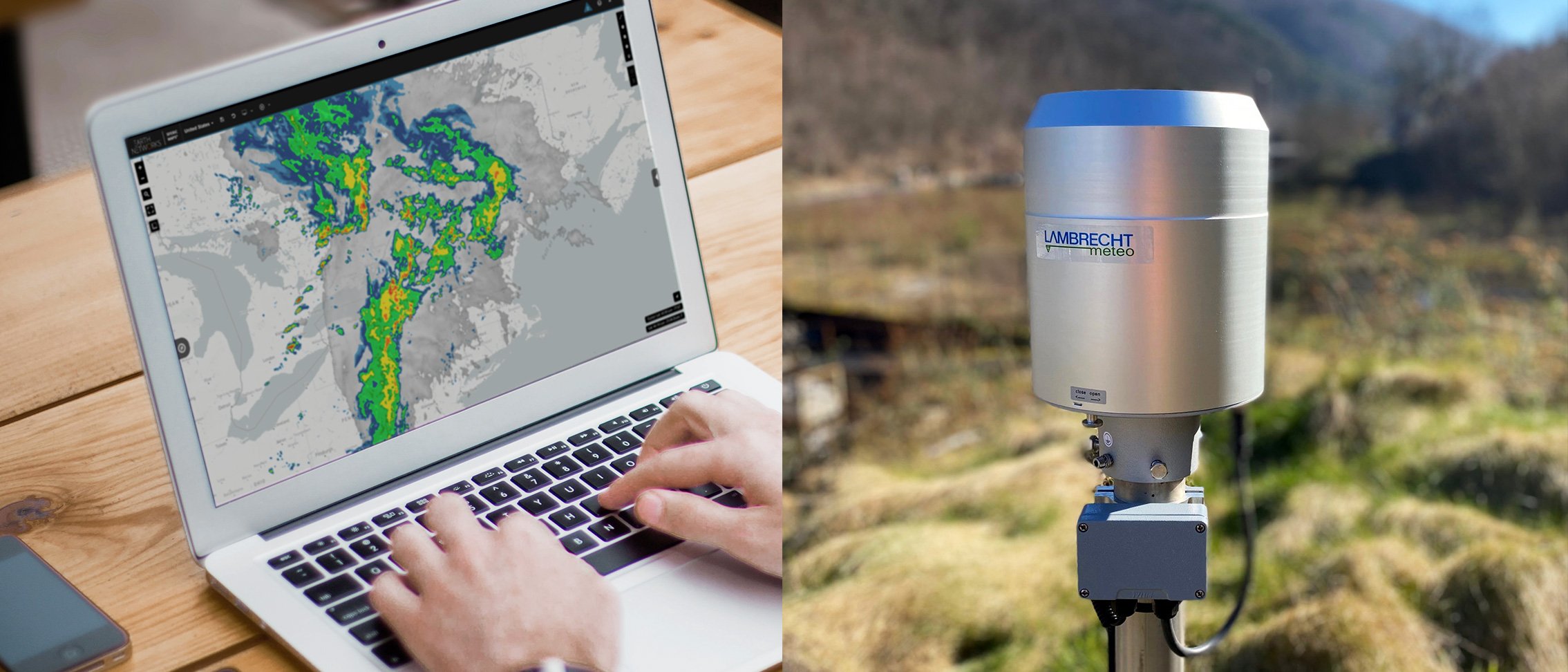
6. WHAT FLOOD SAFETY TOOLS DO YOU CURRENTLY USE TO MONITOR AND ALERT UPON FLOOD WARNING THREATS AT YOUR ORGANIZATION?
As we learned earlier, a lack of funding for flood risk management tools is a key challenge for many organizations. We see that challenge reflected here in the high usage of free weather data, such as television reports and free weather apps. This also reflects the challenge of accessing accurate and reliable information to predict when floods will impact a community or organization. Although these tools are popular and affordable, they do not provide the precise, real-time data and alerts that are required to inform critical decisions and save lives and property.
Important features of a flood risk management system
When asking professionals about must-have features for a flood risk management system, features that focused on forecasting and modeling topped the list. When the waters reach flood stage and above, it is often too late to take action. With expert meteorologists either in house or on call, organizations receive forecasts customized to an event or specific need to help them make the best possible operational weather-influenced decisions.
7. WHEN ADDRESSING THE CHALLENGES OF FLOOD MANAGEMENT, WHAT ARE THE MOST IMPORTANT FEATURES FOR A FLOOD RISK MANAGEMENT SYSTEM?

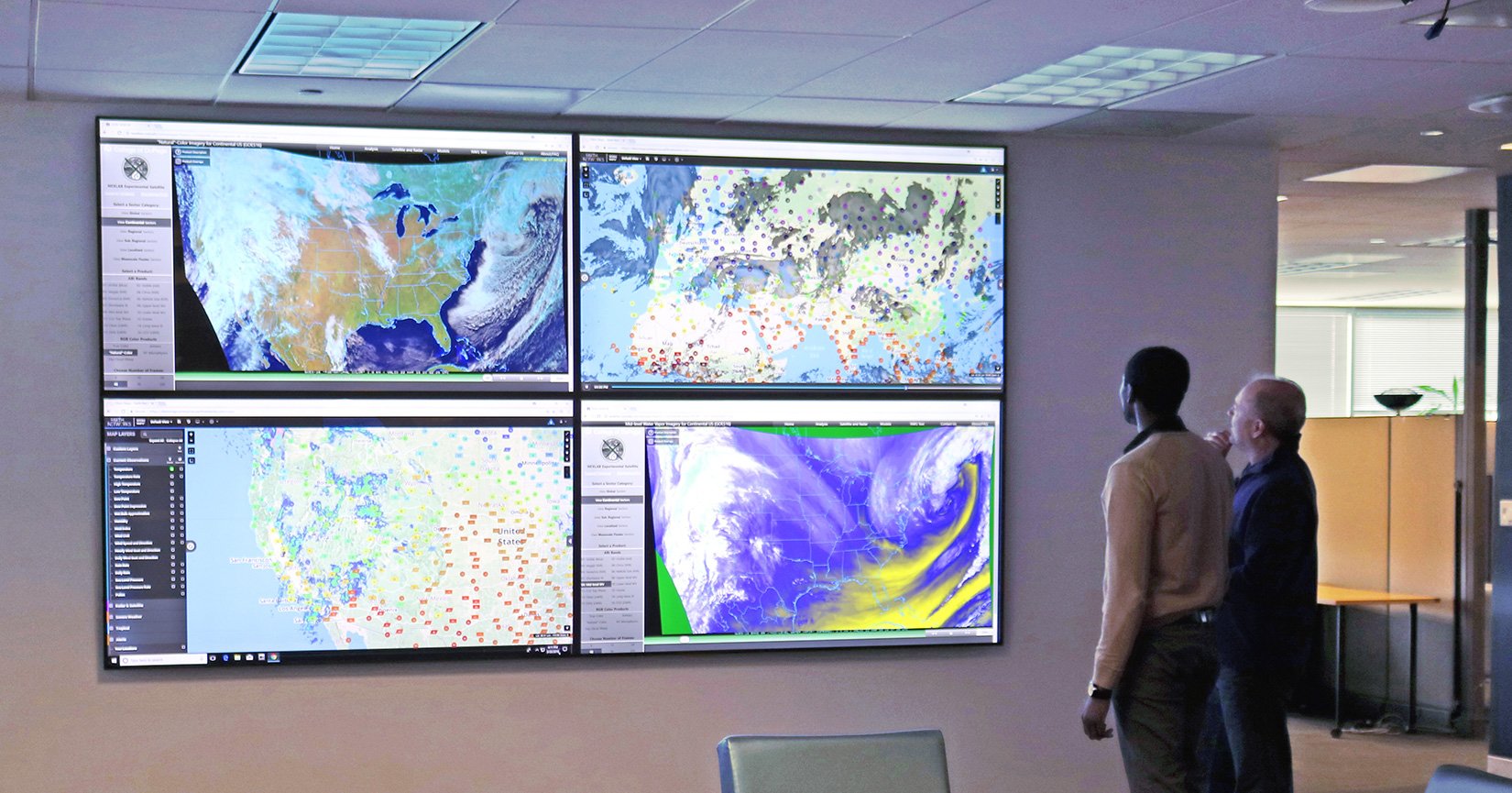
Planned spend in 2022
Flood risk management programs are underfunded
Two-thirds of respondents stated their organizations have budgeted less than $20,000 in 2022 for flood risk management tools and programs. State and Local Government respondents were more likely to have larger budgets with more than one-third reporting a budget of over $50,000. Private organizations had more limited budgets with 80% reporting less than $20,000 to spend in 2022.
8. APPROXIMATELY HOW MUCH MONEY DO YOU PLAN TO SPEND ON FLOOD RISK MANAGEMENT TOOLS AND PROGRAMS AT YOUR ORGANIZATION THROUGHOUT 2022?
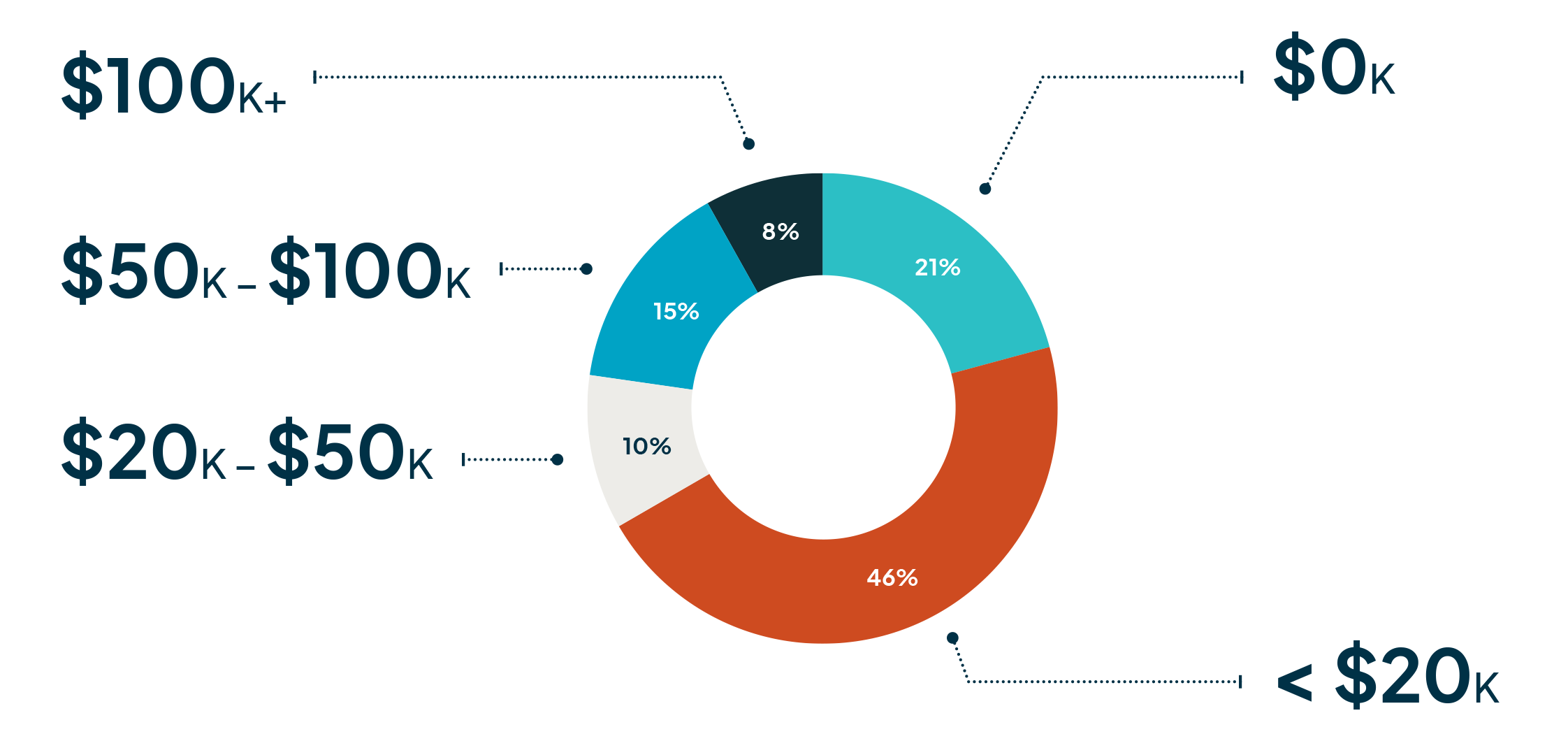
Having adequate flood risk management tools is critical for keeping local communities safe and protecting employees, contractors, and company assets. With most organizations expecting flooding to have a greater impact through 2023, make sure you factor flood risk management into your budgets in 2023.
-1.png)
Download the State of Flood Risk Management report.
Download ReportLearn how AEM can transform your organization.
Get in touch